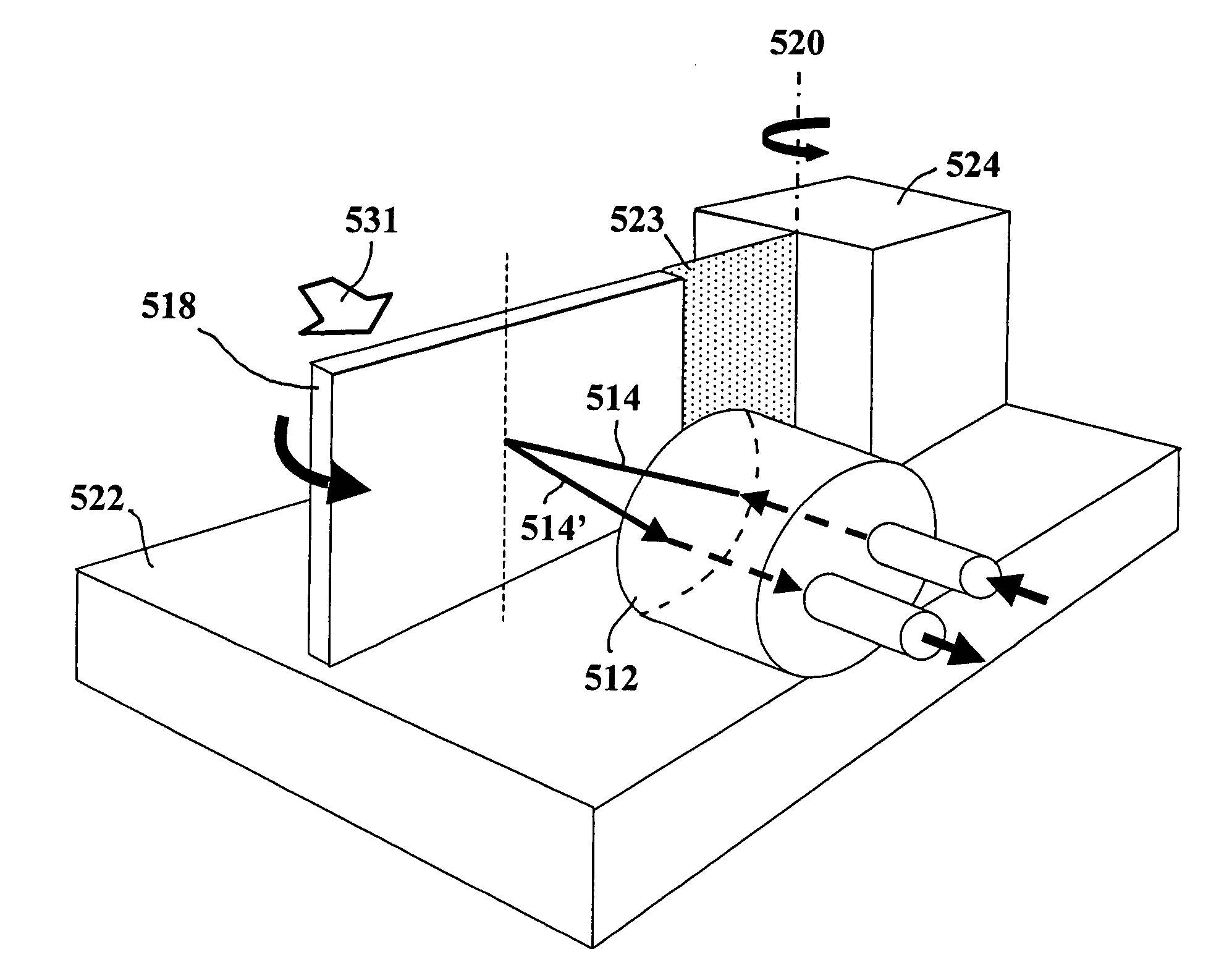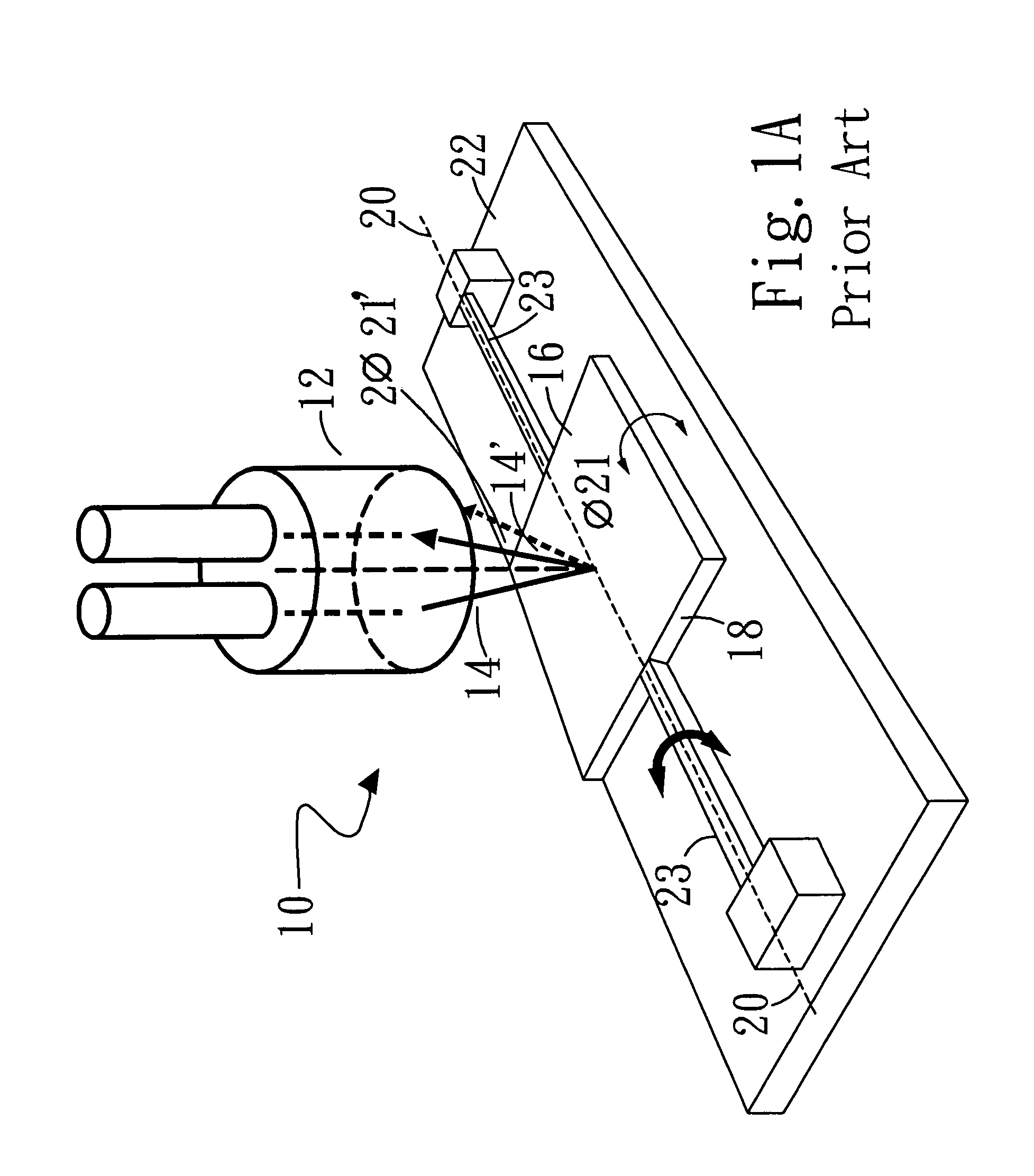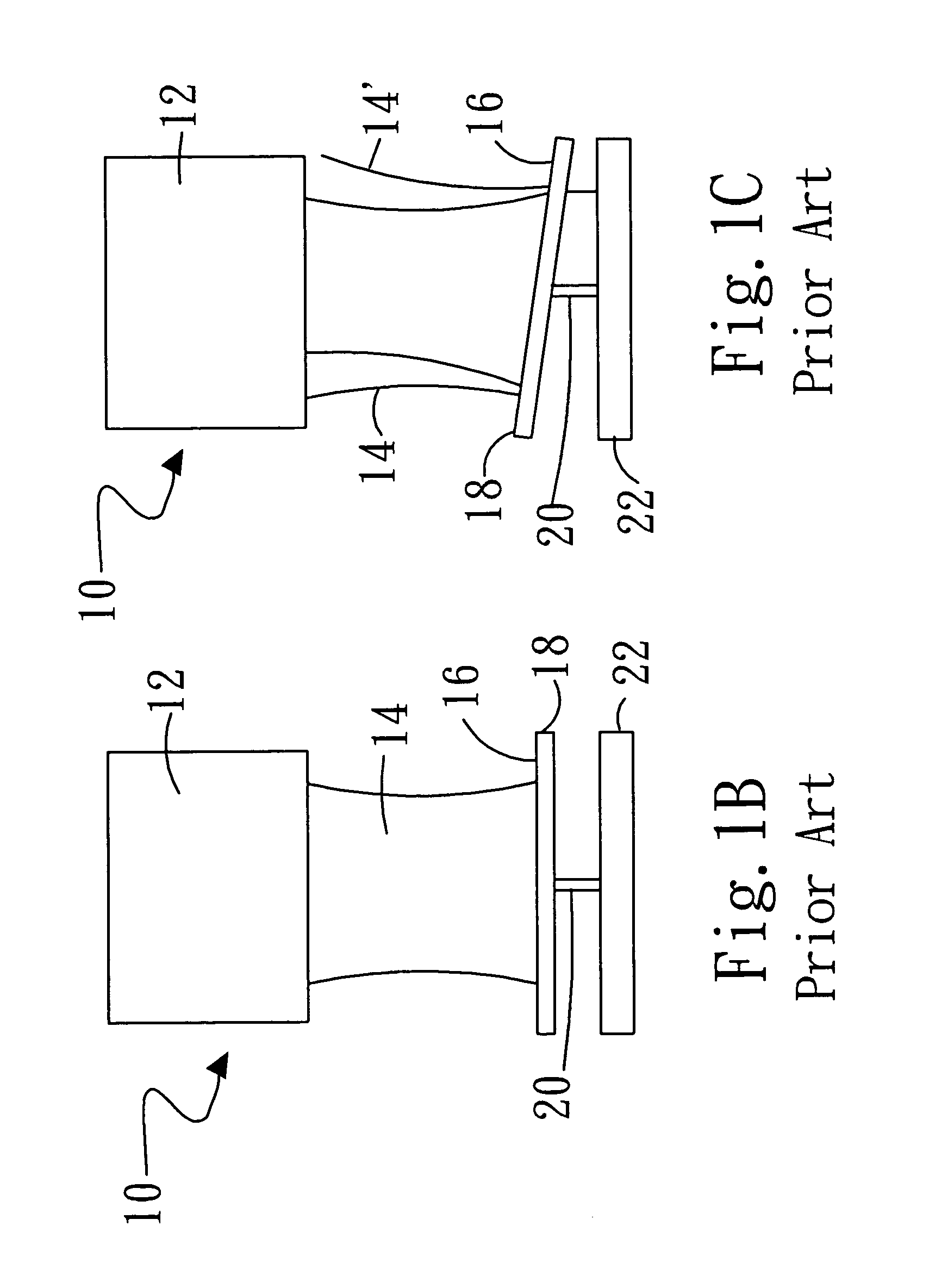Variable optical attenuator
- Summary
- Abstract
- Description
- Claims
- Application Information
AI Technical Summary
Benefits of technology
Problems solved by technology
Method used
Image
Examples
first embodiment
The First Embodiment
[0042]FIGS. 5A, 5B, 5C and 5D show the MEMS VOA device in accordance with the present invention. The MEMS VOA device 510 is made by using micromachining technology. The MEMS VOA device 510 comprises a tilted mirror 518 which is suspended and supported via flexure spring 523 by a post (or a pivot) 524 onto a substrate 522, and input and output optics and fibers 512, 513, 513′ arranged on top of a substrate 522. Once the actuator 530 is under an electrical load, this tilted mirror 518 will have in-plane rotational movement and in-plane displacement with respect to the pivot or upright axis 520, because a driving force 531 is generated by the actuator 530 and applied to the tilted mirror 518 on a contacting point 533 through flexure spring 532. In the other words, the tilted mirror 518 in present invention exhibits movement comprising planar rotational mirror deflection (denoted as ø541 in FIG. 5D) and planar parallel shifted mirror displacement (denoted as t545 in ...
second embodiment
The Second Embodiment
[0046]FIGS. 6A and 6B show the device optical light path configuration for said MEMS VOA device 510 under normally close operation, or dark type VOA device configuration. In this case, original mirror position shown as the tilted mirror 618 is away from an optimal position of tilted mirror 618′, where device achieve minimum coupling loss at this position, or no attenuation. The reflected light beam 614′a from the b point to the d point is away from the optimal reflected light beam 614′c from the b′ point to the c point. The corresponding attenuation value of MEMS VOA device 510 in FIG. 6A is set to be fully attenuation, i.e., no light transmitted. When the actuator 630 drives the tilted mirror 618 with a force 631 to move to an optimal position of tilted mirror 618′, the incident light beam 614 transmits toward the tilted mirror 618′ at the point b′ and is reflected toward the point c, the corresponding reflected light beam path is 614′c which means the best cou...
third embodiment
The Third Embodiment
[0047]In the present invention, the actuator 530 or 630 drives the tilted mirror to move with a force load 531 or 631 at the contacting point 533 or 633 through a spring 532 or 632, as shown in FIGS. 5 and 6. The spring 532 or 632 is designed to be effectively transfer force or displacement generated from actuator 530 or 630 to tilted mirror 518 or 618, and is designed to be a structure including a portion of flexure part that is capable of absorbing the environment mechanical shock or vibration without disturbing the actuation operation along the direction of force 531 or 631 when said MEMS VOA device 510 under operation. For example, the flexure part of said spring 532 or 632 could be a meander-shaped high-aspect-ratio single crystal silicon spring which is able to properly make mirror movement comprising the parallel mirror shifted displacement and rotational mirror deflection, and can reduce the influence of mechanical shock or vibration with respect to direc...
PUM
 Login to View More
Login to View More Abstract
Description
Claims
Application Information
 Login to View More
Login to View More - R&D
- Intellectual Property
- Life Sciences
- Materials
- Tech Scout
- Unparalleled Data Quality
- Higher Quality Content
- 60% Fewer Hallucinations
Browse by: Latest US Patents, China's latest patents, Technical Efficacy Thesaurus, Application Domain, Technology Topic, Popular Technical Reports.
© 2025 PatSnap. All rights reserved.Legal|Privacy policy|Modern Slavery Act Transparency Statement|Sitemap|About US| Contact US: help@patsnap.com



